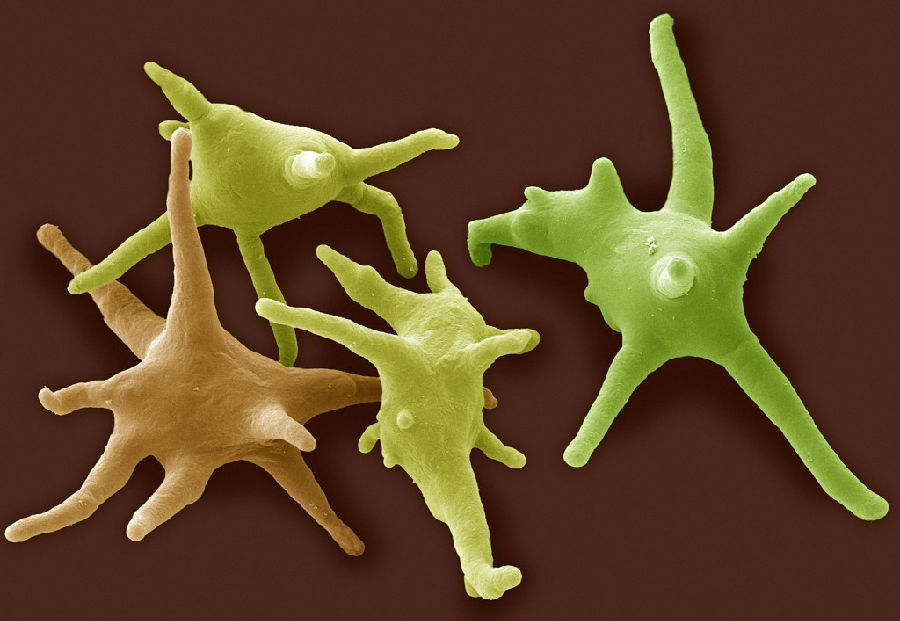He offered no interpretations, but simply the facts of what he had found, accompanied by exquisite drawings. He sent reports on almost everything that could be usefully examined—bread mold, a bee's stinger, blood cells, teeth, hair, his own saliva, excrement, and semen (these last with fretful apologies for their unsavory nature)—nearly all of which had never been seen microscopically before.
列文虎克罗列了他所发现的一些事实,并配以一些精美的绘图,却没有任何解释和说明。他所提交的报告几乎包括了所有可以用于检测的事物——面包霉、蜜蜂螫针、血细胞、牙齿、头发,他自己的唾液、精液甚至大便(提及后面两样时,他还说了为它们的恶臭表示歉意的话)——所有这些以前几乎都没有用显微镜观察过。
After he reported finding "animalcules" in a sample of pepper water in 1676, the members of the Royal Society spent a year with the best devices English technology could produce searching for the "little animals" before finally getting the magnification right. What Leeuwenhoek had found were protozoa. He calculated that there were 8,280,000 of these tiny beings in a single drop of water—more than the number of people in Holland. The world teemed with life in ways and numbers that no one had previously suspected.
1676年,列文虎克在一份报告中声称,他在一份胡椒水试剂中发现了微生动物。皇家学会动用了英国所能生产的一切先进设备来寻找这种“小动物”,直到1年以后才最终解决了放大倍率的问题。列文虎克发现的是原虫。据他计算,一点水中有8280000这样的微生物,比荷兰的人口还多。世界充斥着这样的生命,其生存方式和数目远远超出了以前人们的想像。

Inspired by Leeuwenhoek's fantastic findings, others began to peer into microscopes with such keenness that they sometimes found things that weren't in fact there. One respected Dutch observer, Nicolaus Hartsoecker, was convinced he saw "tiny preformed men" in sperm cells. He called the little beings "homunculi" and for some time many people believed that all humans—indeed, all creatures—were simply vastly inflated versions of tiny but complete precursor beings.
在列文虎克惊人发现的鼓舞下,其他人开始目不转睛她盯着显微镜从事研究,他们的目光有时是过于敏锐了,以致有时他们发现了一些实际上不存在的事物。一位令人尊敬的荷兰研究人员尼古拉·哈茨奥克声称,他在精子细胞中看到了“预先成形的小人”,他为这些小生物取名为“侏儒小人”。有一段时期,许多人相信所有的人——事实上,所有生物——都不过是小而完整的母体的放大体。













